We mapped every wine country fire. They're larger and more destructive than ever
NOV. 7, 2019
Recent wildfires in California's wine country are among the largest and most destructive in state history. October's massive Kincade fire is the latest in a wave of fires that are dramatically reshaping life in the region.
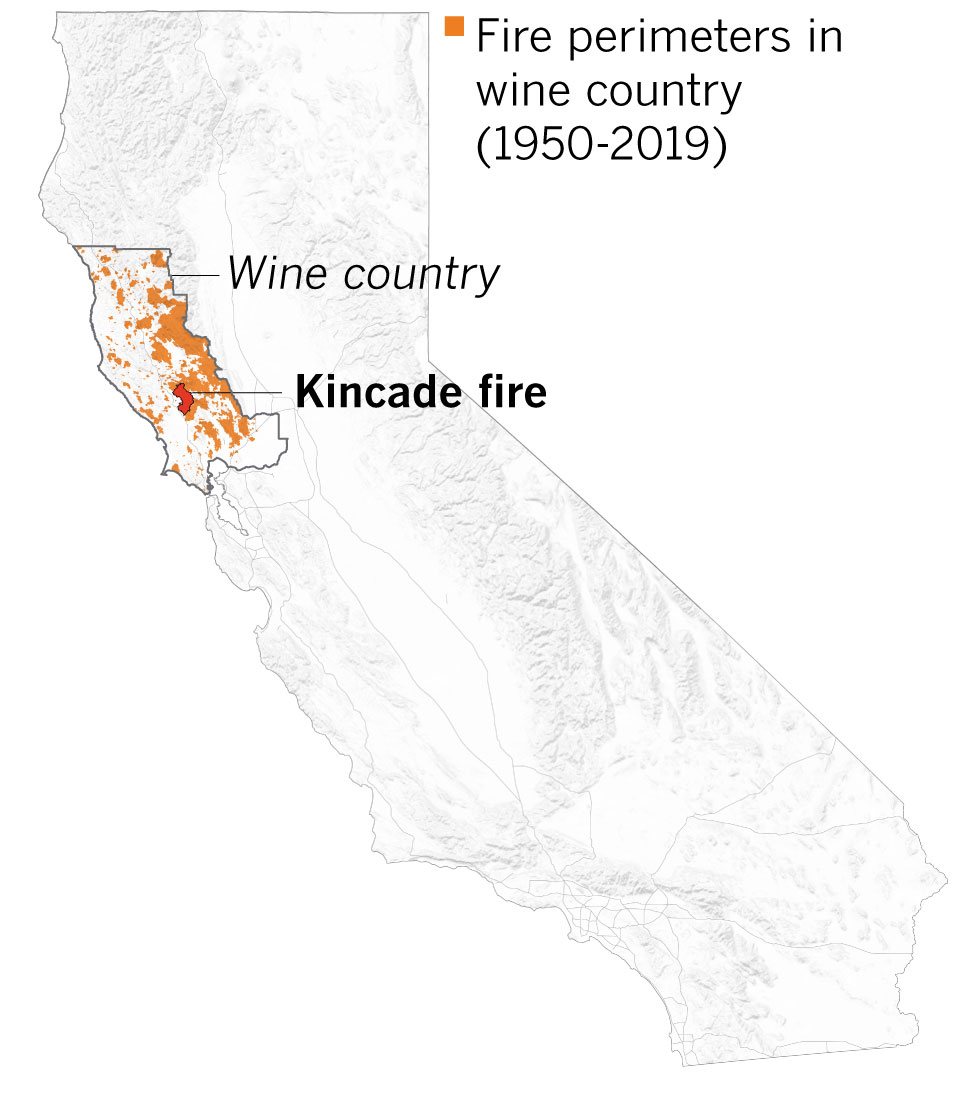
To investigate the trend, The Times analyzed every wildfire since 1950, when the California Department of Forestry and Fire Protection began reliably tracking the size and spread of fires. In the last 20 years, more acres have burned in the region than in the entire previous half-century.
Why is this happening? Scientists point to rising temperatures and the effects of Diablo winds on increasingly dry terrain.
"In a way, climate change is priming the landscape to ignitions," said Max Moritz, a wildfire specialist at UC Santa Barbara.
Acres burned in wine country region per year
1950-1999: 1,011,750 acres 2000-2019: 1,101,322 acres
Seven of wine country's 10 biggest fires since 1950 occurred in the past five years. The Mendocino Complex Fire in 2018, made up of the Ranch and River fires, was the largest recorded fire in California history.
Biggest fires in wine country
AFTER 2015 BEFORE 2015
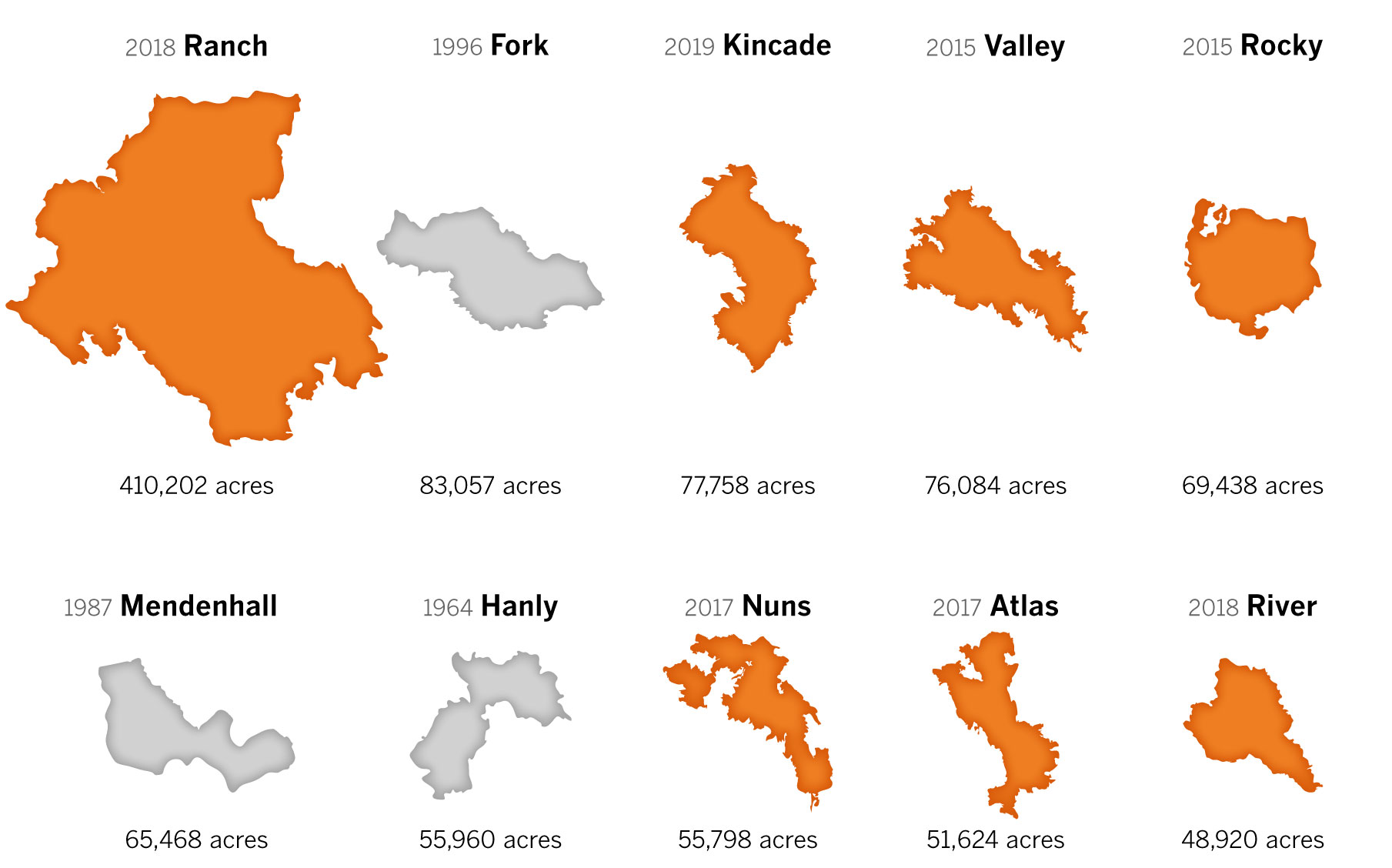
New areas are burning
The fires aren't just bigger — they're also reaching territory that hasn't burned in many years. Since 2000, wildfires have consumed more than 600,000 acres of wine country land that hah been untouched since at least 1950.
The most destructive fires in recent years have been driven by high-speed, dry winds that carry embers faster and farther.
The state's top fire scientists are now focusing efforts on researching wind patterns in an effort to reduce the risks of a hotter, drier climate that they link to global climate change.
"[The wind] is a feature that aligns itself with these damaging events," said David Sapsis, chief scientist at Cal Fire.
Burned before 2000
New land burned after 2000
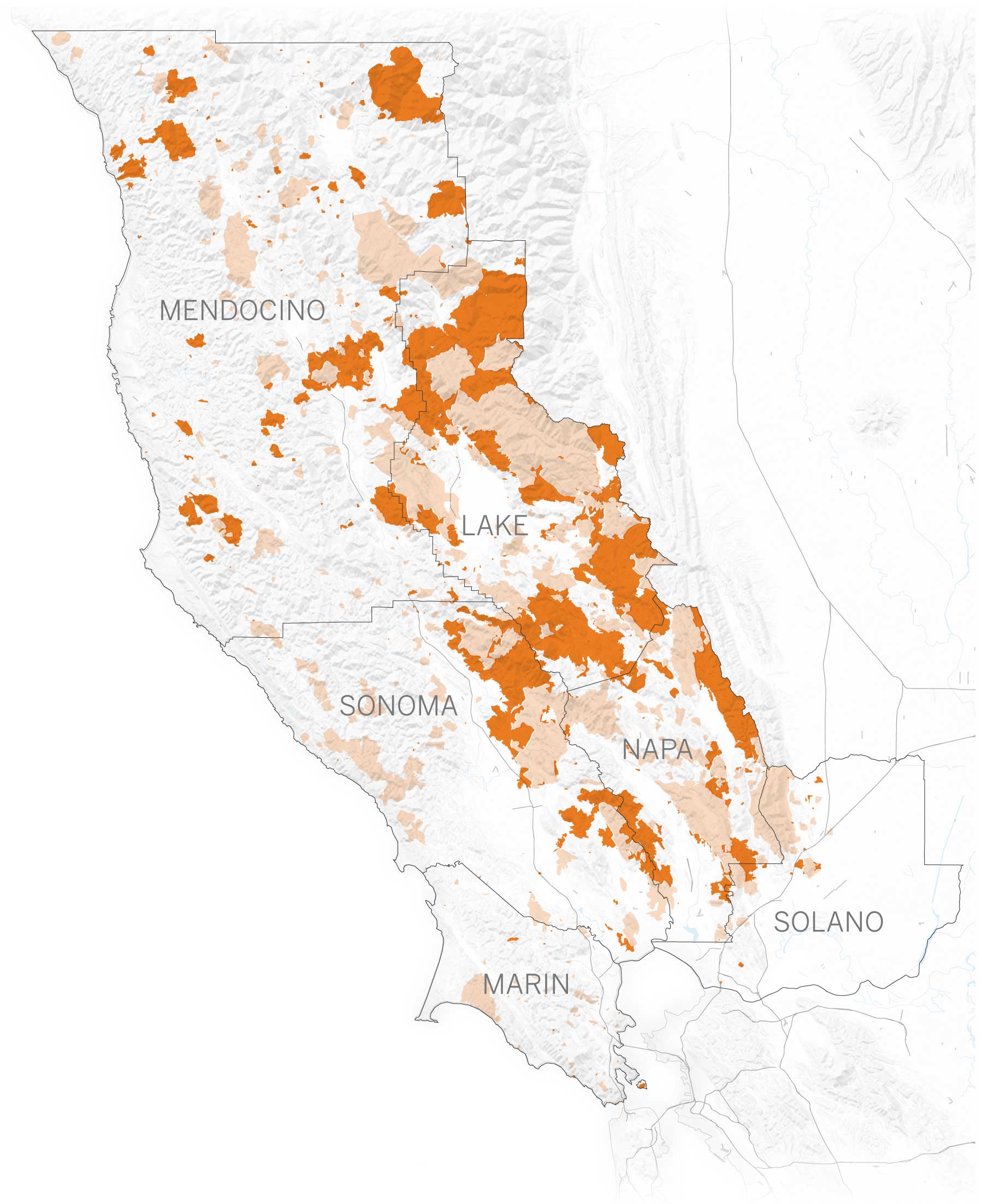
More development, more destruction
The devastation wrought by wildfires is increasing as well. Three of the most destructive fires in California's history — the Tubbs, Valley and Nuns fires — burned in wine country, all within the last five years. These fires alone burned 8,946 buildings, killing 29 people.
Experts say many of the losses are due to increased development, as more and more homes have been built in areas prone to fire.
"The homes are the fuels," Moritz said. "We see these burned neighborhoods where there are still shrubs and trees, and it's clear the homes propagated the fire."
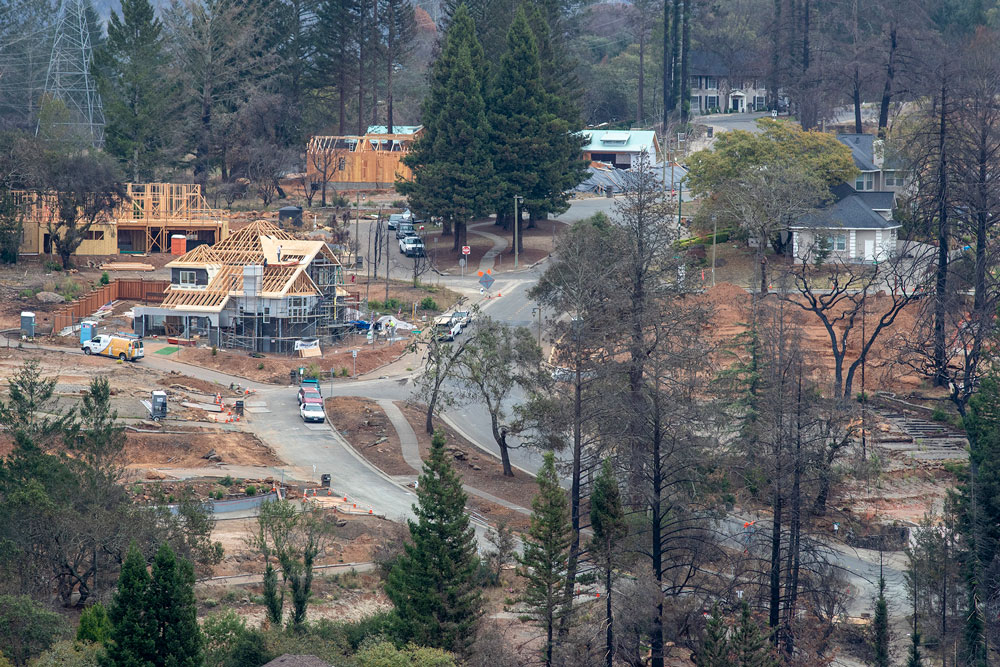 Homes are under construction in a Fountain Grove subdivision in the aftermath and rebuilding of the Tubbs fire in Santa Rosa, Calif., on Oct. 10, 2018. (Brian van der Brug / Los Angeles Times)
Homes are under construction in a Fountain Grove subdivision in the aftermath and rebuilding of the Tubbs fire in Santa Rosa, Calif., on Oct. 10, 2018. (Brian van der Brug / Los Angeles Times)The change is clear when comparing the 1964 Hanly fire to the more destructive 2017 Tubbs fire. Both burned much of the same area, but the Hanly fire destroyed only a few dozen homes in the then-sparsely settled region. In the decades after, thousands more people moved into the region as the wine industry flourished. When fire struck again in 2017, the impact was far more devastating, destroying 5,636 buildings and leading to 22 deaths.
Hanly fire (1964)
- 52,700 acres burned
- 108 homes destroyed
- No fatalities
Tubbs fire (2017)
- 36,807 acres burned
- 4,651 homes destroyed
- 22 fatalities
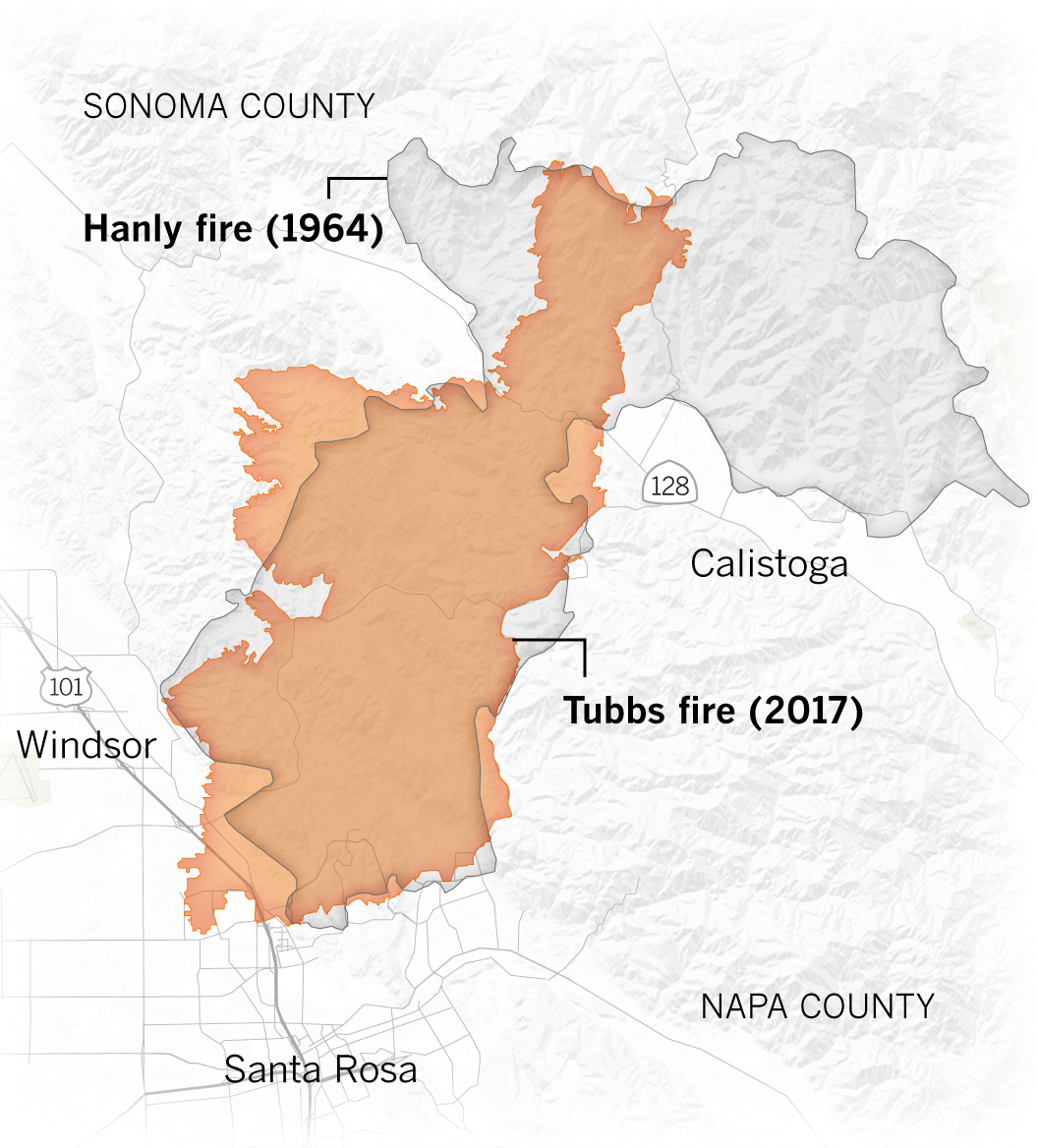
Much of the state's newer development lies in these at-risk areas, known as wildland-urban interface, where fire-prone land and housing are in close proximity.
A 2017 study found that home building in such areas increased 41% nationwide between 1990 and 2010. Wine country's most destructive fires have all burned in these zones.
Wildland-urban interface area
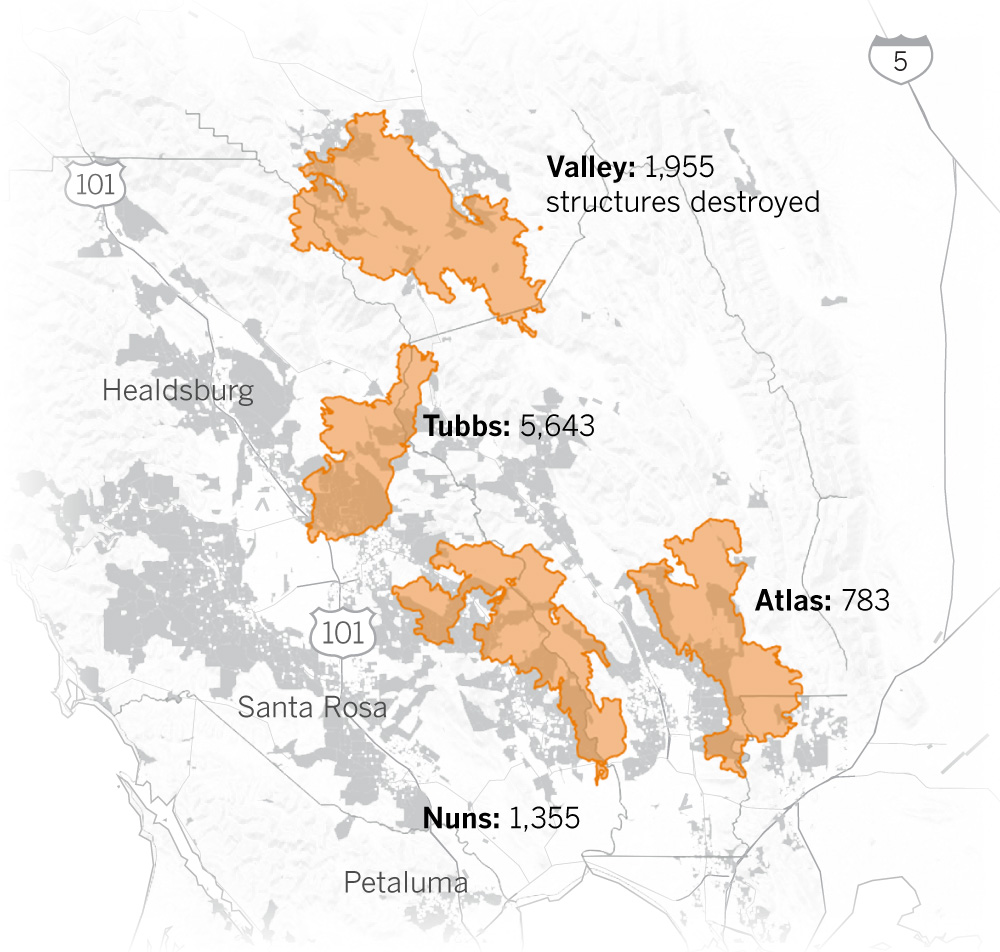
What you can do
Government agencies say that people who live in areas that are at risk of wildfires must work together to better prepare. This includes knowing the best routes to evacuate, clearing defensible space around homes and building with fire-resistant materials.
Sapsis says that barring a fundamental shift in the landscape and climate of the state, people in fire-prone areas must prepare for a large fire event.
"Don't think the fire won't come to you," he said. "That's a bad plan."
--
Groups.io Links:
You receive all messages sent to this group.
View/Reply Online (#32791) | Reply To Group | Reply To Sender | Mute This Topic | New Topic
Your Subscription | Contact Group Owner | Unsubscribe [volcanomadness1@gmail.com]

No comments:
Post a Comment